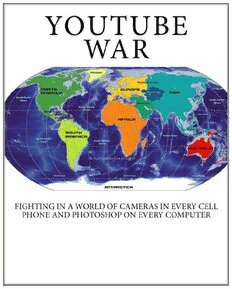
Youtube War: Fighting in a World of Cameras in Every Cell Phone and Photoshop on Every Computer PDF
02009·0.157 MB·English
Most books are stored in the elastic cloud where traffic is expensive. For this reason, we have a limit on daily download.
Preview Youtube War: Fighting in a World of Cameras in Every Cell Phone and Photoshop on Every Computer
Description:
There is a vast literature on the potential for new technologies to create a Revolution in Military Affairs or “networked warfare,” but that is a discussion of the impact of military technology on the way the force itself can be used. Today there is a question regarding the impact of new communication and information technologies in the hands of civilians—some of whom are combatants—on the environment in which the force will be used. This monograph argues that the impact of these technologies has been, and will be, great enough that the way they are shaping the battlefield needs to be understood. Waging war against terrorists (or insurgents using a terrorist playbook) is a qualitatively different enterprise from earlier wars. By definition, terrorists are too weak to fight successful conventional battles. They fight to shape the perceptions and attitudes of the public—a battle over the public's will to continue fighting, whether that is the indigenous public insurgents seek to intimidate or the domestic American public they seek to influence so as to force counterinsurgents to withdraw from the battlefield prematurely. And in the modern world, this will be a battle to shape media coverage. Terrorist attacks ought to be understood as consciously crafted media events, and while that has always been the case, today it is more true than ever before in two ways. First, the terrorist attack is itself often designed and intended for the cameras. Terrorist attacks are designed for an audience. Their true target is not that which is blown up—that item, or those people—for that is merely a stage prop. What is really being targeted are those watching at home. The goal, after all, is to have a psychological effect (to terrorize), and it isn’t possible to have such an effect on the dead. This means that the terrorist attack is a media event in the sense that it is designed to attract the attention of the media, the same way that a political campaign event is a media event designed to attract the media’s attention and thus garner coverage. When we discuss media attention, we are really first and foremost talking about television, and we are really then talking about gaining the attention of the cameras—and the way to do that is to provide good visuals, however those are defined in a particular context. Understanding the interaction between media needs and the way terrorist attacks satisfy those needs is essential. This is the case because developing strategies to fight an insurgent enemy has become more challenging as today’s wars are taking place in a radically new information and media environment, and today’s terrorists and insurgents have been brilliant at capitalizing on this environment in their operational art. For today, terrorism is a media event in a second sense. Terrorists and insurgents are now no longer dependent upon the professional media to communicate. In fact, to an unprecedented degree, the professional media have become dependent upon them. This is due to technological developments which permit any terrorist to film, edit, and upload their actions virtually in real time whether Western media are there to serve witness or not. Several new technologies, all of which have become relatively mature at relatively the same time, together have made this new information environment, and it is this environment on which terrorists and insurgents are capitalizing. An information or communication technology becomes mature when it meets several criteria. First, it must be available off-the-shelf. Second, it must be affordable, something within financial reach of a decent percentage of the population. Third, critically, it must be small enough to be easily portable. Fourth, it must be available in most of the world, and not just in the developed countries.
See more
The list of books you might like
Most books are stored in the elastic cloud where traffic is expensive. For this reason, we have a limit on daily download.
